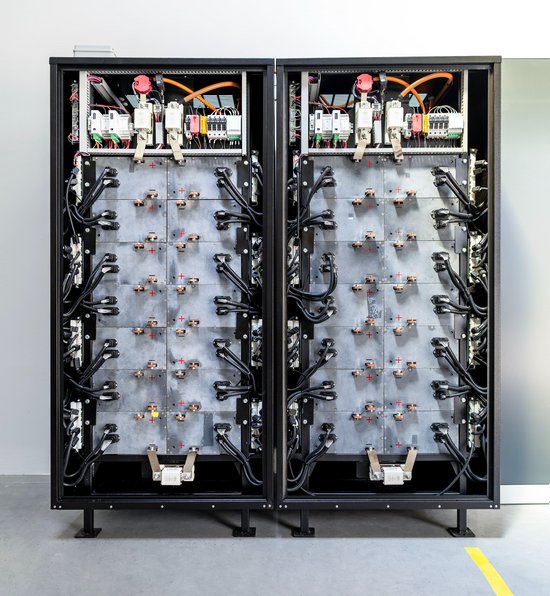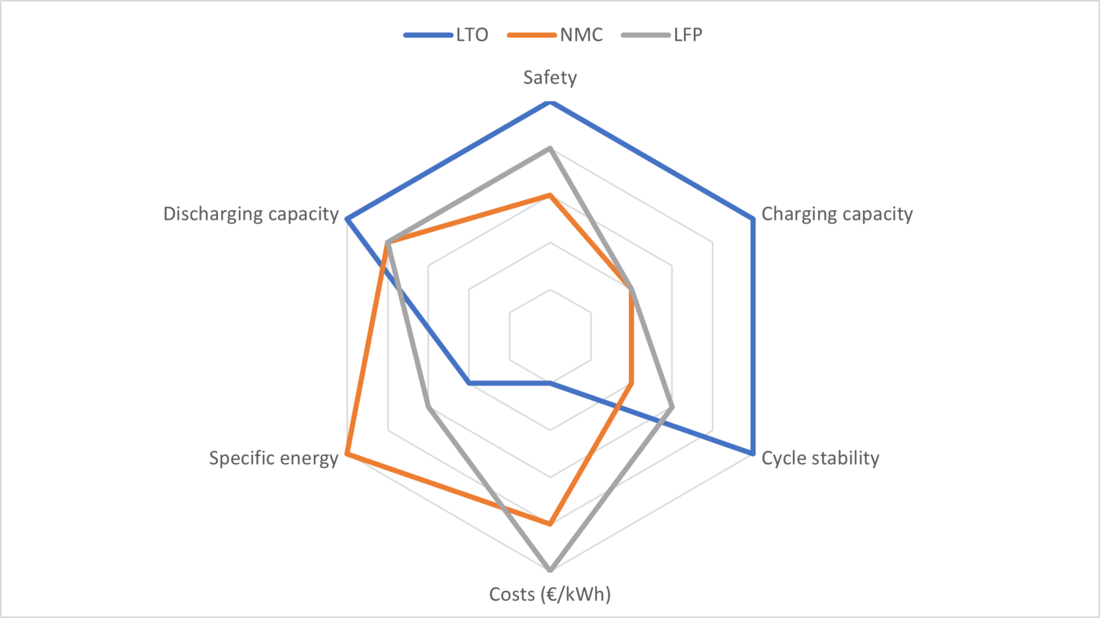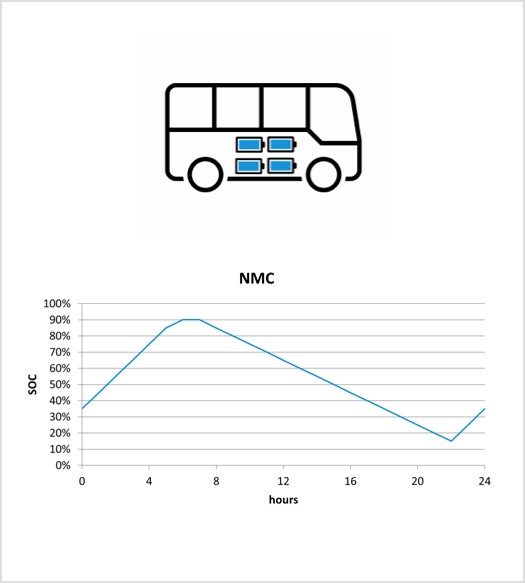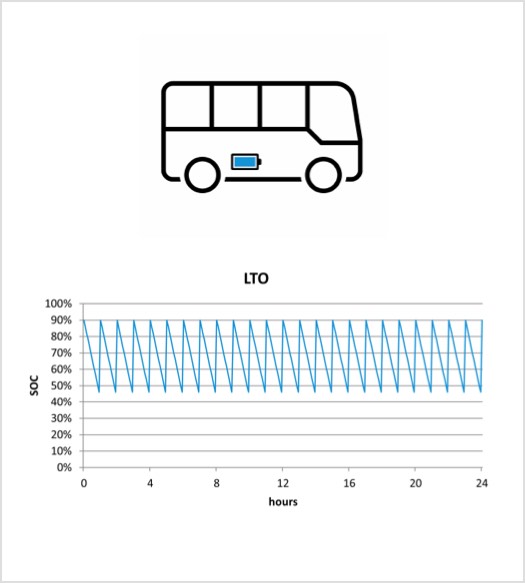LTO battery technology
LTO battery systems – properties and advantages
Lithium-ion batteries are used today in the majority of applications which require an electrochemical energy storage medium. Various forms exist within this technology which are mainly differentiated through diverse cathode and anode materials. Fundamentally speaking, the technologies can be classified as high energy or high performance. The amount of energy, meaning the energy per weight or volume, is the main criterion in many applications. Other applications see performance playing a predominant role.
Lithium-titanium-oxide (LTO) battery technology, which is also one of the lithium-ion rechargeable battery mediums, is a typical technology classified as high performance. It differs in terms of its structure through the negative electrode (anode). In contrast to the classic graphite anode (e.g. in NMC batteries), it consists of lithium titanium spinel (Li4Ti5O12). It has a considerably greater effective surface than a graphite electrode, thus ensuring high charging and discharging currents and a high cycle life.

Advantages of LTO battery technology
Battery systems with LTO battery technology
The ability to discharge practically 100% of available energy (depth of discharge – DoD) over numerous cycles means that overdimensioning of the battery to achieve the required service life is unnecessary. The ratio between the usable energy content and installed energy content is practically 1:1 as a result. This also means that size and weight can be less when compared to battery systems employing other technologies.
The design of all battery systems always involves a compromise between different properties. A typical depiction of dimensions during design is illustrated in the following diagram. LTO offers advantages in terms of safety, performance (particularly in the charging direction) and the service life. Costs per installed kWh are higher. When it comes to the more relevant benchmark of total cost of ownership (TCO), this technology is frequently more cost effective, due to a longer service life and reduced overdimensioning.

Application example – opportunity charging
NMC*/LFP* battery systems
- High energy with overnight charging in the bus depot
- Charging stations are required for each bus
- Central infrastructure
- Long range for each charging – no rapid charging
- Daily charging time of 8 hours
* Lithium nickel manganese cobalt
* Lithium iron phosphate

LTO battery systems
- High power with opportunity charging
- Rapid charging possible at intermediate stops
- Reduction of operating costs due to a long service life and greater operating time
- Decentralized infrastructure
- 24/7 operation possible


